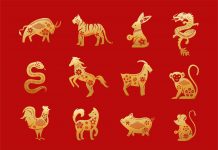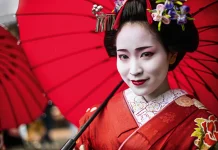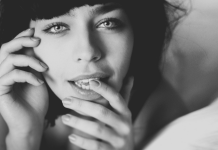What is fashion, where does it come from and what is it for? If the word “design” only appeared in the 1950s , the history of design began at the end of the 19th century with the industrial revolution which saw the creation of the Art Nouveau movement and the Thonet cane chair, the first design piece of furniture.!
Difficult to find a concise and precise definition of this infinite universe, community and at the same time very personal. But to go really fast, we could say that fashion is novelty, originality, sometimes even a provocation against the established order. Breaking with traditions, it is a precious indicator of the evolution of our society.
Fashion represents a strong economic and cultural stake. It is a strategic and symbolic sector for France and for its international influence. Paris has long been the fashion capital of the world and remains one of the major places in the context of international competition from creative supreme-metropolises.
Table of Contents
History of fashion through the ages
In prehistoric times
During prehistoric times, fashion was not really present: clothes had a different utility, more functional than that we know them today. Nonetheless, one could see a very thin beginning of what would become fashionable as they decorated their clothes with feathers and carved bones. In short, we hardly saw the clothing trend emerge.

In the 14th century (around 1300)

We make a great leap in history to find ourselves in the 14th century, in France. At that time, fashion exists only in the aristocracy, that is, among the nobles. The dresses and costumes compete in elegance and voluptuousness with precious fabrics and flashy accessories. It is mainly the men who put on make-up, to give themselves a pale complexion, and they all wear a lot of perfume, since we do not wash.
In the 19th century (around 1800)

It was at this time that we saw a real beginning of fashion, when the designer Charles Frederick Worth, a Franco-British, paraded his creations on real models, to constitute the first fashion show of the History of Haute Couture.
The history of fashion really begins in the 19th century. The designer Charles-Frédéric Worth, a pioneer of Haute Couture, was the first to parade his models on real models, in prestigious salons where a wealthy female clientele gathered … undoubtedly the first fashion shows in history.
In 1900, Paris had around twenty Haute Couture houses. There will be a hundred in 1946 (… and barely 15 at the turn of the 21st century).
Around 1920

During this period dubbed the Roaring Twenties, the fashion was with short hair and comfortable clothes to represent women as independent. During the day, they dress in a masculine and sober way while in the evening, they put out elegant dresses and extravagant jewelry. It was in the years 1900 to 2000 that we saw the emergence of some of the greatest couturiers of all time: Coco Chanel, Yves St-Laurent, etc. Black, which was reserved for funerals, enters common wardrobes, as do sequins and glass beads, which are very present on dresses.
World War II (1939-1945)

During World War II, women tried to maintain their elegance while showing ingenuity with limited materials: curtains became dresses and fashion shifted from long skirts to shorter skirts, just below the knees, since ‘we lack fabric. The hat also became an important symbol of the fashion of the time. This historic period is called a “luxury frenzy” and clothing for women is turned towards femininity.
The post-war years, 1960 and 1970

In 1946, attempts were made to introduce the bikini and the two-piece swimsuit to women: at the beginning, it was banned on many European beaches, but gradually it became part of the wardrobe until that in 1967, more than 67% of American women adopted it. It was also during this same year that the t-shirt and jeans made their appearance in France. It is quickly becoming popular and is worn by both men and women. In 1960, the mini-skirt, which rises above the knee, made its debut. Unfortunately, this garment that is common to us today creates a lot of negative reactions. Finally, the seventies marked the beginning of elephant-leg pants, romantic dresses and fringed jackets. Wearing pants became unisex in 1970 and women wore their hair as short as it was long.
Around 1980 and 1990

In 1980, rebel fashion invaded the shops: fluorescent colors, shoulder pads… This was also the advent of the first “top models”, the faces of fashion. Fashion subsequently took a flash: platform shoes, high-waisted jeans, colorful scrunchies and sweeping haircuts were very popular. We also see a more feminist and more provocative side of fashion. We try to react with eccentricities, and we want to bring out the thin waist with oversized shoulder pads. We therefore find disco, pop, sportswear and rock / gothic periods during this same decade.
Around 2000

It is the emergence of clothing brands, such as Adidas and Puma. Wearing brand name clothes is extremely important to the majority of consumers, which is why there is a large selection of brand name clothes in stores. The appearance is unimportant; the brand is crucial. The style is metallic: studded belts, rhinestones, bracelets, etc. Short, tight-fitting sweaters were also an integral part of the fashion of the time. Colorful plastic glasses, wide pants and bright colors: that’s the fashion of 2000.
Nowadays, with the Internet, we can order our clothes directly online and have them by fast delivery. Over the ages, we have gradually traded elegance for practicality. Fashion and clothing are above all a way to show what we like and to show belonging to some group. Ripped jeans, tight sweaters and cropped pants are all part of the fashion we live in every day. What’s next? Only the future knows.
The wardrobe in the 19th century
The year 1804
From 1804, the Empire resumed the label of the Ancien Régime. The Empire line dress was then adopted as official court attire. It is the heir to the Directoire dress of neoclassical inspiration, white and light, made of linen or cotton muslin. This line, adopted by Joséphine during the Coronation, is characterized by a wide square neckline, balloon sleeves and a train attached to the high waist. The forms of court dress are also very popular in the city. The cashmere shawls brought by Bonaparte’s officers after the Egyptian campaign become essential to complete an elegant outfit. French production is developing thanks to Jacquard mechanics. In the male costume, the Empire brings several novelties such as the carrick, ample coat with tiered pilgrims.
Romantic Period

The fashion of the time was mainly influenced by the medieval taste inherited in part from the novels of Walter Scott, the ” Magician of the North “, author of Waverley (1771-1832). The romantic woman seeks to obtain a so-called ” hourglass figure”»Formed by the voluminous sleeves, the bell-shaped skirt and the very fitted waist, made possible by the corset which reappeared shortly before 1830. The dresses are cut from fine fabrics in light colors, the patterns of which are printed by roller or delicately embroidered. The skirts are shortened above the ankle and decorated with ruffles or raised patterns. Men are also figure-conscious and even wear corsets to slim their waistline. The outfit is usually made up of fitted pants, a shirt, a colored waistcoat and a coat or frock coat. It is completed with a top hat and a tie which can also add a touch of color to this dark suit.
THE DANDYS
The first manifestations of dandyism back to the XVIII th century with George Bryan Brummell (1778-1840). While fashion was in breeches, he wore trousers, linen shirts with very high collars and ties, distinguished by exemplary sobriety which gave him the title of arbiter elegantiarum (arbiter of elegance) at the British court. In the XIX th century, Jules Barbey d’Aurevilly (1808-1889) revives the dandyism, head of a new generation that sees the sartorial elegance and literature, how to start a ” new aristocracy not of birth , but of the spirit”. Glorified by the writers of the time, the dandies were however criticized by their contemporaries as their dress was so original and far from the sobriety of Brummell. In the mid-century, the so-called ” dandy ” wears long, tight-fitting pants, features padded shoulders and a high waist that he pairs with a stiff collar, making him ” look like a wasp.” “.
A DRESS FOR EVERY OCCASION
Around 1860, etiquette manuals, the women’s press and the newly created diary contributed to the proliferation of daily outfits according to particular circumstances. An elegant woman then needs five to six toilets a day: bed jump, bathrobe when you wake up, tailored suit for the morning errands, dress for visits in the afternoon, tea-gown for the interior. Evening dresses, on the other hand, can be dinner or opera dresses. The emergence of leisure and tourism also creates the need for new outfits. Indeed, the very popular seaside resorts offer many activities requiring special toilets, such as the tennis dress, the bathing suit or the jump-in-boat. The diversification of outfits is also favored by the industry, with the aim of increasing sales.
TEXTILES AND INDUSTRY
Thanks to the industrial revolution, technical advances allow mass production and the democratization of inexpensive models through clothing. Jacquard mechanics were perfected in 1801 and the sewing machine was invented in 1830 by Barthélémy Thimmonier (1793-1857). While at the XVIII thcentury, the clothes were made to measure and by hand, their elaboration is now partially mechanized, in particular as regards the lace and the embroidery, which allows a faster production and at a lower cost. New artificial dyes allow women to sport outfits in flashy colors. Advances in metallurgy lead to the creation in 1828 of the metal eyelet which allows the corset to be tightened more without tearing the fabric. A year later, the metal shank, placed under the sole, facilitates the return of the heel. In 1858, the metal hoops of the Thomson crinolines freed the legs from the many petticoats previously worn.
RETURN TO THE 1870-1880
Around 1870, the turn replaced the crinoline. This boned half-cage accentuates the arch of the back by rejecting the fullness of the skirt at the back. The volume of the turn evolves until 1890, it can support an ottoman, take the form of a crayfish tail or be worn under the dress à la Polonaise, again in vogue at this time. Fashions change rapidly: the turn disappears around 1880, when the silhouette becomes skinny with the “ princess ” dress. The hair raised in a large bun above the head contributes to this slim look. Feminine outfits require large amounts of fabric and, to keep up with new fashions inexpensively, women take back faded dresses to create other toilets.
THE PERIOD 1880-1890
Whether it’s menswear or womenswear, the general trend of the turn of the century is to simplify. The vertical-pleated skirt competes with the draped skirt of the previous decade and the ” tailored suit”»Is enjoying growing success. It is a lightly ornamented set made up of a very fitted bodice-jacket with small basques and a double skirt. The corset however still imposes a sinuous and arched line accentuated by the high collars and the more voluminous hats. Outer garments such as visits, overcoats or mantelets are of great variety. The male costume changes little but is also simplified: the dress with basques is now reserved for the evening dress and only the tie can give a touch of fantasy to the dress. However, the importance of accessories should be noted: an elegant man cannot go out without his top hat, pocket watch, cufflinks and tie pin.
JAPANISM AND NEW ART
Japonism, favored by the forced opening of Japan in 1853, had a considerable influence on Western artists. Introduced in France through prints, Japanese motifs bear witness to a different sensibility. Flowing water, flowers and swallows come to cover textiles, fans and jewelry. The kimono is becoming fashionable in the West. It is worn by women at costume balls or as indoor attire. The themes developed by Japonism also find an echo in Art Nouveau, with the search for curved lines and naturalistic shapes. These two movements oppose the excesses of industrialization and mass production, favoring craftsmanship and the unique object. They allow you to see fashion in a different way.
THE HAUTE COUTURE
Charles Frederick Worth, considered the inventor of haute couture, opened an establishment in 1858 offering his own creations. For the first time, the models are not pre-ordered by the customers but come straight out of Worth’s imagination. The elegant ones can even admire the outfits on ” look-alikes “.», Young girls chosen according to the morphology of the clients. They see the look of the finished garment and make sure it meets their expectations before buying it. The couturier’s success was immense. Paul Poiret, a former apprentice of Worth, opened his fashion house in 1904 and stood out as much for his designs inspired by the Orient as for his desire to rethink women’s clothing. Other couturiers, such as Madeleine Vionnet or Jacques Doucet, in turn influenced the fashion of their time and paved the way for the great couturiers of today.
The French Fashion Institute

The IFM is a higher education establishment recognized by the State, but also a center of continuing education and expertise for the textile, fashion, luxury and design industries. It is headed by Dominique Jacomet. Founded in 1986 by professionals with the support of the Ministry of Industry, and placed under its supervision, the IFM welcomes more than 150 students and 2,000 professionals each year.
The Institute is a member of the Conférence des grandes écoles and the International Foundation of Fashion Technology Institutes (IFFTI) and aims to decompartmentalize management and creation in an industry that combines products, brands, culture and design.
Heritage, public collections
It was not until the middle of the 20th century, and the specialization of a few curators around the world, for the museology of clothing to evolve and become a discipline in its own right. At the beginning, two different visions are expressed: an exceptional vision of the costume and a daily vision of the garment.
After the Victoria & Albert Museum in London in 1935, France built up a collection of costumes at the Carnavalet Museum in the 1940s, thanks to the intervention of its curator François Boucher. The collection was then transferred to the Palais Galliera, which became the Fashion and Costume Museum in 1977 and then the City of Paris Fashion Museum in 2013.
The Fashion and Textile Museum, created in the Louvre buildings in 1986 by the will of the Ministry of Culture, defends daily fashion, “heritage in the making” according to Yvonne Deslandres, and no longer the exceptional fashion as a sign of society. This museum brings together the clothing collections of the French Costume Arts Union (UFAC), created by François Boucher in 1948, and the decorative arts textile collections. It was inaugurated by the President of the Republic and had the ambition to be one of the elements of a much larger whole, a true pole of fashion at the Louvre, but this project was ultimately unsuccessful.
In the 1980s, it was the expansion phase: an exhibition on the clothing industry, La mode une industrie de pointe , was held at the City of Science and Industry. About sixty museums of fashion, costume, hats, lace, fabric are created or extended in the region.
Coco Chanel

Coco Chanel, born Gabrielle Bonheur Chasnel, was born in Saumur on August 19, 1883. At the age of 12, following the death of her mother, her father decided to place them, her and her two sisters, in the orphanage of the Cistercian Abbey of Aubazine.
Certainly rebellious by nature, Coco Chanel allows herself many freedoms, especially in terms of clothing. Her sewing skills allow her to make her own clothes, which will prophesy the sleek elegance that will make her famous: outfits of flashy sobriety, twisted by pieces reserved for the male wardrobe like the cardigan and pants.
In 1915, driven by the desire to free women in their daily activities, Coco Chanel embarked on couture and developed collections against the tide: the shapes widened, the waist loosened and the skirts were brazenly cropped. Another stroke of brilliance: the designer multiplies stylistic paradoxes by reconciling simplicity and elegance, masculine and feminine style, noble materials and practical uses.
Chanel, after the war
Upon liberation, Coco Chanel went on vacation to Switzerland and settled on the shores of Lake Geneva, where she would stay for 10 years. It was not until 1954, when she reached the age of 71, that Gabrielle Chanel agreed to reopen her house at the request of the Wertheimer brothers. She then reconnected with the threads of creation and established herself as a stylistic opponent of Christian Dior, whose New Look crystallized post-war fashion.
Chanel, nowadays
Since the death of “Mademoiselle” in 1971, the double C label has not lost its prestige. This thanks to the virtuoso talent of Karl Lagerfeld who, from 1983, updated and infinitely declined the codes of the famous house. Unmissable in the lineage of Coco Chanel, the artistic director of the house – of which he remains at the head until his death in February 2019 – also extends the stylistic heritage of the latter via a watchmaking collection, launched in 1987, and a line of cosmetics, marketed since the end of the 1990s.
20th century fashion

Fashion is everywhere. It seduces, moves, attracts – and unites. Hardly a decade goes by without the fashion designers of their time shaping the outward appearance of our society with new trends, innovative materials, dramatic cuts and extraordinary shapes. Much more: Fashion reflects the mood and social atmosphere of each decade and underlines – sometimes vividly, sometimes more discreetly – the personalities of those who follow it. And because fashion is not only versatile and exciting, but also wonderfully scalable, we invite you on a fashion time journey. Started in the 1920s through the Roaring Twenties and continuing until the 2010s, our journey highlights the evolution of trends, materials.
Fashion of the 1920s
The 1920s represented a real upheaval in fashion for modern women. It was necessary to free oneself from the memories of war which still haunted the spirits and to enjoy life to the fullest. Thus the lifestyle became more daring, the skirts shorter and the cuts less strict. To support themselves and their families, many women worked during the day, and in the evening they had fun in dance clubs or bars where jazz was played. They put on make-up, displayed great confidence, enjoyed life to the fullest and did not deprive themselves of any freedom. Fashion liberation was the key! In capitals like Berlin, London or Paris, women, concerned about their appearance, followed fashion as closely as possible.
The fashion icons of the roaring twenties
They were both role models and trailblazers – female 1920s style icons preferred short haircuts and flats, smoked, drank alcohol, and put on excessive makeup in public. On their own, they abandoned the corset, continued to wear loose, masculine-style clothes during the day, and short skirts in the evening. Women like Hollywood star Gloria Swanson, artist Kiki de Montparnasse, dancer Joséphine Baker and fashion designer Coco Chanel have infused, through their unconventional lifestyles, a new way of life for women of their generation and gave them the courage to take their chance and make the most of every day.
Fashion from the past and today
Fashion is both unforgettable and timeless. It inspires us, makes us dream and it even makes us travel sometimes! It is an art form, but not only because it is also a social marker that allows us to express our uniqueness.
It is often said that Fashion is an eternal restart. Even though Fashion is constantly evolving, it is often inspired by decades past. Thus, we have seen the emergence of major trends during different periods.
Remember the Charleston style in the 1920s with fringed dresses and sparkling pearls or even the arrival of the New Look with Christian Dior in the 1940s. A style that has become legendary thanks to its fitted jackets, rounded shoulders and her loose skirts! In the 70s, the famous trouser legs arrived, then disco outfits in the 80s or even animal prints in the 90s!
Different styles that we love or hate, no matter how they marked the spirits! Moreover, all these trends still inspire current fashion. Also, there are flagship and timeless pieces that cross all eras. For my part, there are three that I particularly like.
First, the bohemian trend of the 70s with long dresses and lace details. I like to match them with boots and a fringed jacket to find this hippie chic but very feminine side!
Another must-have jeans, very fashionable in the 90s! I like to wear it with a printed tee and white sneakers.
































































